- Forum
- General Discussion | Introductions | Off Topic Forum
- Photography General Discussion
- Getting ugly catchlights when using Octabox
Getting ugly catchlights when using Octabox
-
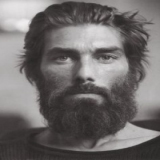 Topic Author
Topic Author
- Randall McNabb
- Lone Wolf
-
- Nikon D7100
- Followers: 80
- Posts: 138
-
Points:
2383
Post #576827
What am I doing wrong?
-
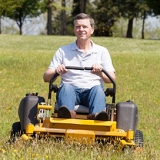
- J Photo Man
- Snapobsessed
-
- Nikon D700
- Followers: 152
- Posts: 480
-
Points:
7885
Post #576843
-

- effron
- Newbie
- Followers: 1623
-
Points:
129640
-

- garyrhook
- Oh Wise One
-
- Nikon D850, Nikon D750, Panasonic G7K
- Followers: 912
- Posts: 11103
-
Points:
67681
-
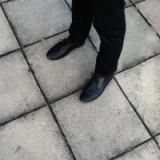
- albinpix
- Snapobsessed
- Followers: 59
- Posts: 258
-
Points:
3843
-
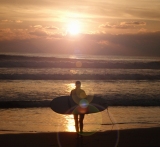
- Tony Imaging
- Photography Hooked
-
- Nikon D800
- Followers: 191
- Posts: 825
-
Points:
7496
Post #576939
-
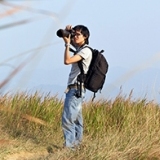
- MM Images
- Snapobsessed
-
- Nikon D610
- Followers: 113
- Posts: 265
-
Points:
3104
-
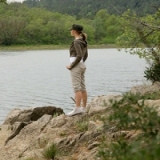
- Carry
- Photography Hooked
-
- Nikon D700
- Followers: 184
- Posts: 510
-
Points:
7835
-
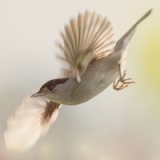
- G Vernon
- Apprentice
-
- Nikon D500 / Nikon D810 / Nikon 105mm macro / Nikon 24-70mm / Nikon 200-500mm
- Followers: 200
- Posts: 2450
-
Points:
24691
Post #577125
-

- Vahrenkamp
- Master of the Lens
-
- Nikon D800
- Followers: 287
- Posts: 1605
-
Points:
7635
Post #577571
GJ-Vernon wrote: The larger the source, the softer it is. It all depends on what you will be shooting that dictates how large you want your source to be. As a general rule the distance from subject shouldn´t be any greater than the diameter of the Octa or Beauty dish for example on a head and shoulder shot it´ll usually just be fractionally outside of the frame. A good size would be 60 inches + for a 3/4 / full length shot. Another way to achieve large catch lights is to stand directly in front of a larger diameter Octabank, the light will still wrap around the subject, but at close range for head and shoulders it´ll produce nicely sculptured almost translucent catch-lights.
I've seen some of your portraits, very catchy work. Good post. +1
-
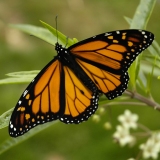
- Stacy Kaufman
- Has the Hang of it
-
- Canon 5D Mark III and S95
- Followers: 22
- Posts: 56
-
Points:
514
Post #577938
-

- Gord-O
- Newbie
-
- Nikon D610, Nikon D7200 & D7100
- Followers: 61
- Posts: 7
-
Points:
2015
- Forum
- General Discussion | Introductions | Off Topic Forum
- Photography General Discussion
- Getting ugly catchlights when using Octabox
Latest Reviews
The Canon EOS R100 is an entry-level mirrorless camera introduced in 2023. But just because it’s an entry-level camera doesn’t mean it’s a bare-bones camera. Find out why in this review!
Nikon’s retro-looking Nikon Zfc is anything but retro. Under its classic body is a host of features and amenities that make it a worthwhile compact mirrorless camera for 2024.
The Canon EOS R50 is one of the newest R-system cameras from Canon. Is it worth your money? Find out all the details you need to know in this comprehensive review.
The Sony FE 70-200mm f/2.8 GM OSS II is Sony’s flagship mirrorless zoom lens. As such, it’s loaded with features and has a top-shelf build quality that makes it a top pick!
Forum Top Posters
-
1TCav 5 posts
-
2Randy Shaw 4 posts
-
3Prago 4 posts
-
4Foggy 4 posts
-
5Razky 4 posts
-
6CharleyL 3 posts
-
7db3348 3 posts
-
8CaptNemo 3 posts
-
9Sandy Smith Photos 3 posts
-
10Steve Zahra 2 posts
Latest Articles
The Canon EOS R100 is an entry-level mirrorless camera introduced in 2023. But just because it’s an entry-level camera doesn’t mean it’s a bare-bones camera. Find out why in this review!
Are you ready to upgrade your camera? Before buying new, you might consider the value of purchasing used gear to save money.
The Olympus OM-D E-M10 Mark IV is a micro four thirds camera released in 2020. It’s an entry-level system along with the OM-D E-M5 Mark III. Use this guide to determine which one is best for you!
Blue hour photography might not be as well known as golden hour photography, but it is every bit as good a time to create epic images of landscapes. Learn how in this quick tutorial!
Nikon’s retro-looking Nikon Zfc is anything but retro. Under its classic body is a host of features and amenities that make it a worthwhile compact mirrorless camera for 2024.
Moving from taking snapshots of your dog to creating beautiful images doesn’t have to be that difficult! Use the tips outlined in this dog photography guide, and you’ll get better results in no time.
Acrylic print photos are a beautiful way to display your favorite images. But they don’t come without some questions. Get all the answers you need about this medium in this guide!
Where do you get your landscape photography inspiration? Is it from masters like Ansel Adams? Or perhaps viewing art from other genres? We’ve got these and a few other sources for you to check out!

















